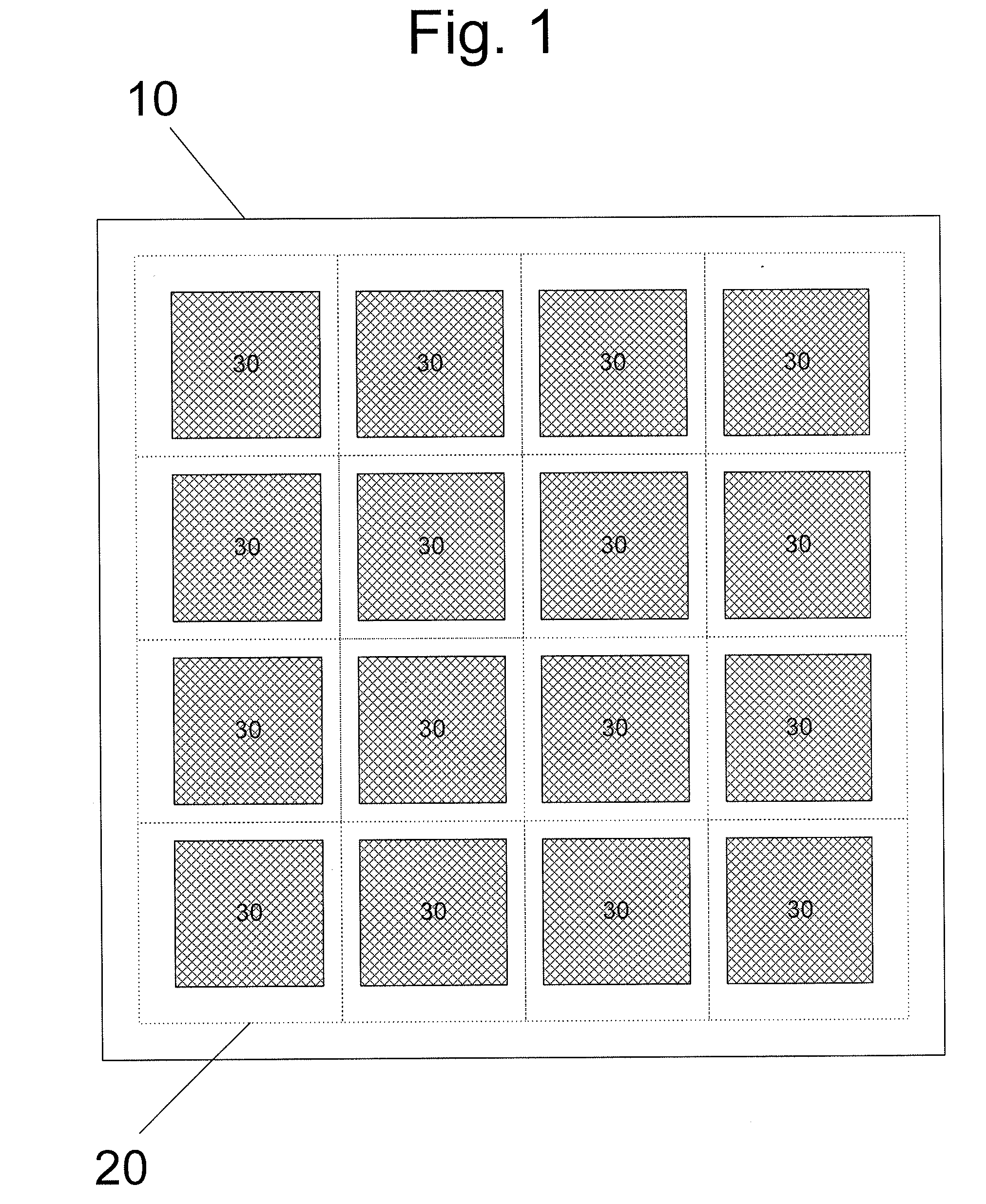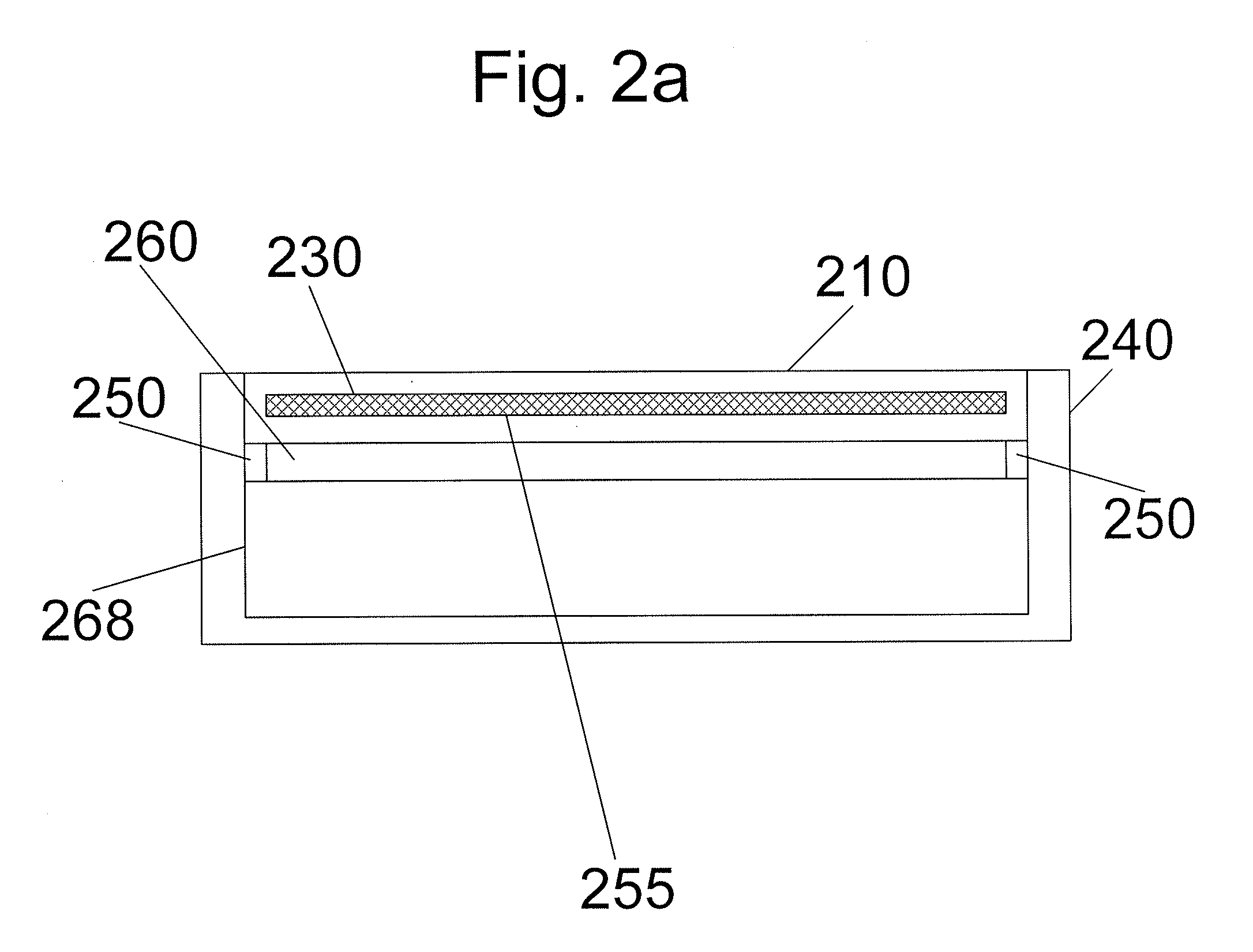However, touch screen interfaces have many significant drawbacks.
They are generally harder to use than physical, mechanical keys since flat surfaces provide no tactile differentiation for the user to orient where his / her fingers are to press to activate / select particular keys associated with certain input values, operational
modes, and / or functions.
This is contrary to “touch-
typing” on a standard PC keyboard where the eyes are on the document and the fingers are on the keys; and, it is contrary to the concept of mobile devices where the user is “mobile” while at the same time using the device; it is disruptive of entertainment, media and gaming where the eyes must be taken off displayed media / game / entertainment content and
graphics to look at the
user input interface.
This lack of tactile differentiation can be a particular problem in handheld devices that are used when the eyes are looking elsewhere.
This problem is highlighted by the voice-over
accessibility solution that many of these devices incorporate in order to attempt to provide a useable device for the
visually impaired user.
Nevertheless, these voice-over solutions are highly problematic.
Further, many of the
third party applications that are available and a critical part of the user experience of these devices are not optimized for the voice-over capability, and hence are not
usable by a
visually impaired person.
A significant ease of use problem with touchscreens is that it is inherently difficult to rest the fingers on the surface without activating the touchscreen sensors and, hence, initiating a command sequence on the device.
This is particularly an issue with the way many touchscreens and control surfaces are implemented whereby each application is permitted to use the touchscreen surface entirely differently, providing the user no consistent usage patterns.
This means that the fingers must be held raised above the screen, among other
usability issues, resulting in a number of difficulties.
The difficulties include: (1) finger and hand strain from holding the fingers above the surface, and (2) difficulty orienting the fingers over the right locations on the touchscreen.
Flat touchscreens do not allow for these important ease of use features.
However, mechanical keys have drawbacks as well.
For mobile devices, where the size of the overall device is a critical factor for users, there is a very difficult balance between size of device, size of display (size of “eyeball” experience) and the presence, if any, of mechanical keys.
Mechanical keys in mobile devices add complexity and cost to the manufacture of the device, and also generally reduce the size of the touchscreen in order to allow space for the physical keys.
A further drawback of mechanical keys has been the need to print labels on each key at the time of manufacture.
This imposes additional steps and cost to the manufacturing process, incurs the risk of mis-labeled keys leading to increased returns and / or
quality control checks.
Further, as devices increasingly require a highly varied set of and types of input from the user (including in relation to subsequently-installed, third-party
software applications), pre-labeling keys at the time of manufacture significantly limits the
efficacy of the keys even if subsequent
third party application developers can re-configure the input-to-application action effect of the press of a key because the user still sees the original labeling on the key, not the function of the key as altered to meet the needs of a
software application.
This makes sense from a reliability, cost-of-component and cost-of-manufacture perspective and for a single purpose context (such as
text entry in a single language) where the keys are pre-labeled at the time of manufacture, but is not providing an
effective solution for new mechanical key systems, especially in the context that increasingly the demands for
user input have changed radically from the time when a user primarily looked to the keyboard to enter text.
These have generally not achieved a significant level of
usability improvement over the basic touchscreen experience.
These overlays add a level of complexity to the user's experience that is frequently not desirable, particularly in the context of the simplicity intent behind implementing a touchscreen
user interface in a device in the first place.
Further, the user must precisely orient the
overlay in relation to the keys appearing by
software on the touchscreen, which, in the case of an
overlay that removably attaches is not a simple matter, and a small offset means that key presses on the overlay actually activate the wrong virtual key in the touchscreen software.
Furthermore, an overlay may be optimized for one specific application's
user interface layout, but may not be designed in any way to work across other applications with different
user interface designs.
Each of these has its own set of drawbacks or limitations.
Voice recognition, for instance, while increasingly technologically available, suffers from social and other constraints.
For instance, it is problematic socially or from a business perspective to dictate out loud a private
text message while in public, such as on a commuter
train, in a business
conference room, etc.
 Login to View More
Login to View More  Login to View More
Login to View More 


